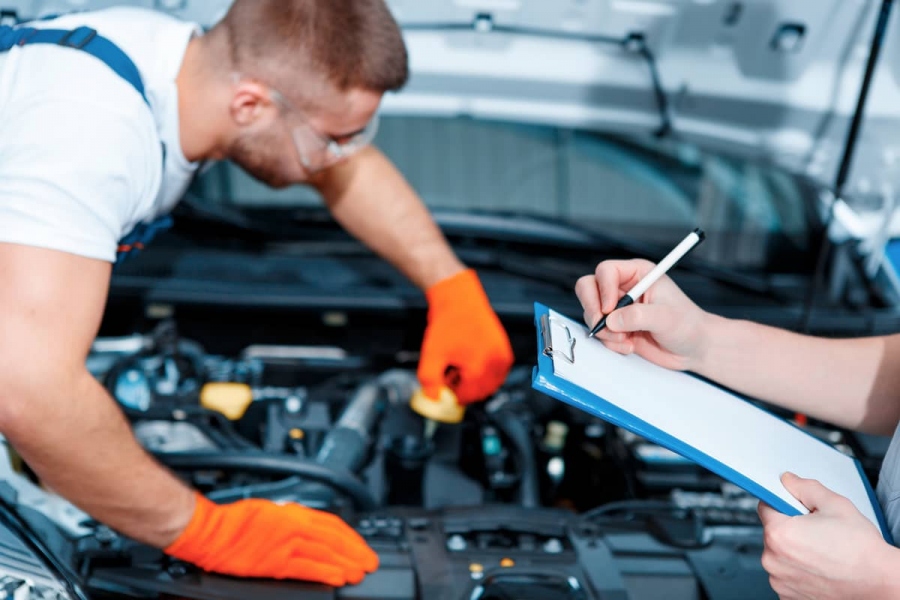Fleet management and maintenance is a challenging and hectic task to undertake. Other important responsibilities you need to account for include vehicle purchasing and driver training.
A fleet manager needs to ensure compliance with a lot of legal requirements and safety regulations. With all this, there is also added pressure on cutting expenses, maximising productivity and increasing efficiency.
But despite all these challenges and critical issues, vehicle downtime continues to remain the most frustrating aspect of any fleet maintenance and management. No matter what the reason is behind the downtime, having to travel without certain vehicles can prove extremely costly, especially for businesses that are dependent on it.
Even after all this, private companies and public institutions fail to address the long-term consequences of mis-managed vehicle off-road (VOR) time. Overall, only 36 per cent of respondents measure their fleet VOR time.
For businesses, this results in a significant loss of turnover. To make sure that your company doesn’t encounter this scenario, establishing a cohesive and comprehensive vehicle fleet downtime policy with outsourced providers is essential.
But before taking this step, you may want to consider the following five ways on how a company can reduce fleet downtime.

1: Regular Servicing, Maintenance & Repair
Undoubtedly, this is the most essential and effective method for reducing the VOR time. Although accidents and vehicle breakdowns that require repairs are challenging to manage, these have still been the most observed unplanned disruptions to vehicle availability.
With ever increasing wheel-off incidents, it has become important to have a strong working relationship with your respective fleet maintenance and management providers. This will help you make sure that the downtimes are kept to a minimum.
There are times when delays at repair teams are unavoidable. But if your maintenance provider has an in-depth understanding of your fleet due a lot of these problems can be avoided. For instance, with proper wheel nut safety, wheel-off incidents could be controlled that would reduce the overall impact on your business.
A vehicle that is regularly maintained and repaired is less likely to breakdown and cause downtime problems.
2: Purchase New Vehicles
Although, buying a brand new vehicle may seem a bit expensive, the potential long-term cost saving and VOR benefits are worth the expense. Your new vehicle will be built using the latest technology and modern standards. This means that your fleets are less likely to breakdown. Additionally, the new fleets come with a warranty of up to 3 years at the very least.
Even if your current vehicle is working well and continues to do its job, regular breakdowns tend to become a distinct possibility. This requires more maintenance, which eventually takes up your valuable time and can be costly.
3: Opt For Vehicles That Are Easier & Cheaper To Repair
This particularly depends on the type of business or service as specialised vehicles are mostly required in certain fields. But the type of vehicle you need makes a huge difference to the cost and time of repairs.
Manufacturers do not really tell the buyers how much the type of vehicle that they choose will cost to repair. However, insurance companies now have started to reveal this information. Huge and expensive vehicles typically take a lot of time to fix and also costs involved are higher.
Hence, we recommend opting for vehicles that are cheaper to maintain and repair.
Must Read: Excellent Ways to Maintain Your Commercial Vehicles
4: Install Speed Limiters
As a fleet manager, you would not want to watch your vehicles break the speed limit while out on the road. This particularly increases the risk of accidents and eventually the VOR time. Therefore, speed limiters are an essential attractive proposition that every fleet manager should consider.
Although they sound like the best thing fleet managers can do to keep their vehicles and drivers safe, less than 5 per cent of vehicles are actually fitted with speed limiters. The reason behind the avoidance is some businesses feel that it would lead to an unhappy and frustrated workforce.
However, businesses should know that restricting their fleets to the national speed limits brings in fuel savings, safety improvements and lesser accidents. Although the journey might take long hours, the downtime is effectively reduced.
5: Flexible Hire Vehicles during Seasonal Peaks
In certain seasons, you are bound to have busy and jam-packed schedules. Most of this is attributed to the seasonal or public holidays. Regardless of the cause of your jam-packed schedule, you need to make sure that you have sufficient vehicles to cope with the increased demands.
If at all your vehicles are facing VOR time, it is sensible to find an alternative. Purchasing extra vehicles during such a situation can be expensive as well as risky, especially when these vehicles may not be used during off-peak seasons. Contracting hire vehicles can be your possible solution in this scenario, but the terms and conditions may not be ideal in every situation.
We recommend that you check with your fleet maintenance and management provider to see if they could arrange some sort of flexible hire. While you might have to spend some additional money each month, it will eliminate seasonal downtime and ensure that you always have vehicles at your disposal whenever needed.
